Dunu Alpha 3 - Solid Buds
Flathead earbuds (or “buds”) are one of the most delightful surprise for me in the audio hobby. They offer the open sensation and comfort that many IEMs struggle to provide, at a way lower costs. However, they also have a lot of limitations, making them niche product in an already niche market of “audiophile” products.
For a while, the niche market of earbuds was dominated by DIYers. However, Dunu is coming back to the segment with Alpha 3, the continuation of the Alpha line that started back in 2015. How does a big manufacturer do in a market dominated by DIYers? Let’s find out.
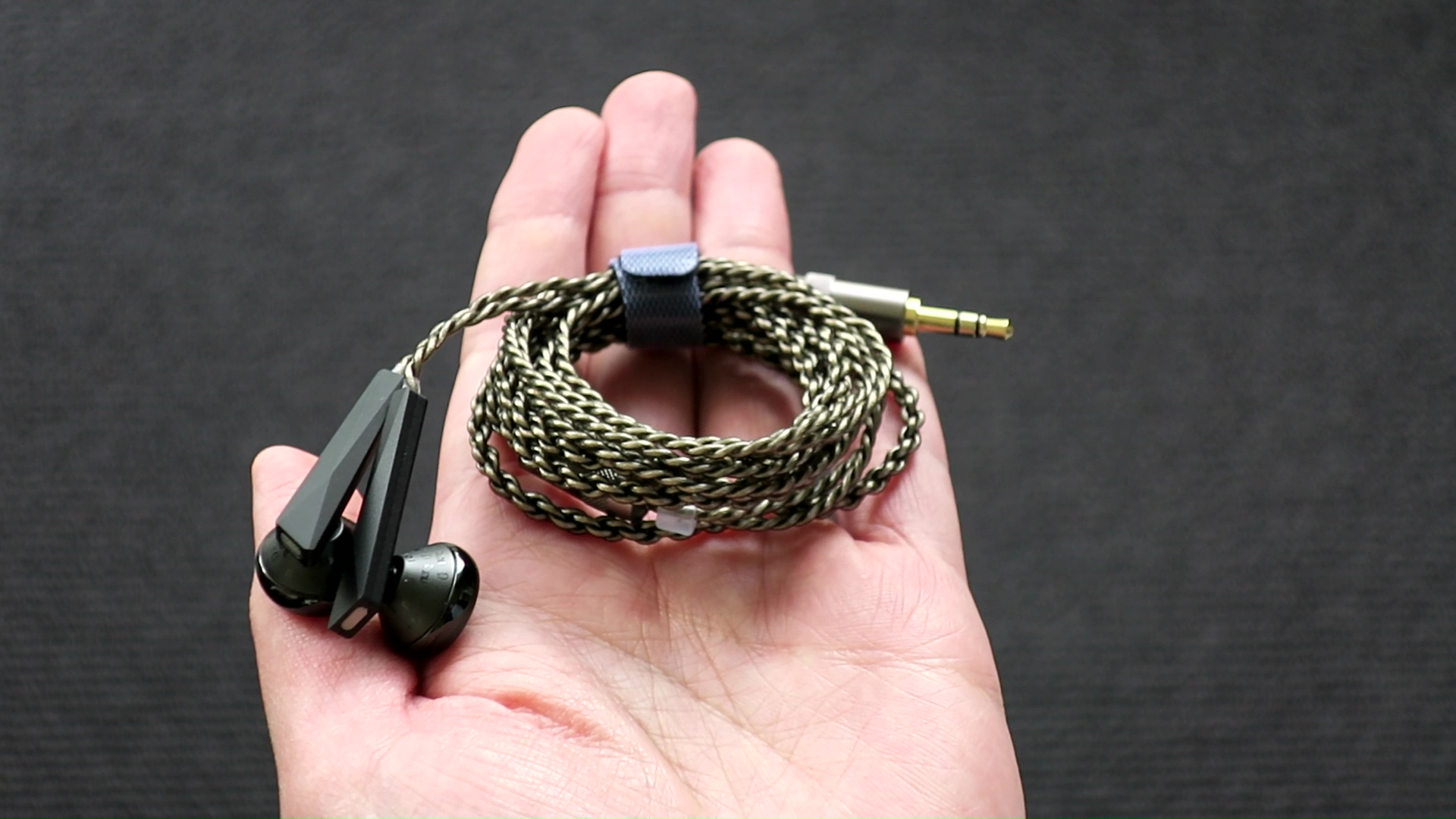
Forewords
- What I look for in an IEM is immersion. I want to feel the orchestra around me, track individual instruments, and hear all of their textures and details. I’m not picky about tonality, as long as it does not get in the way of immersion.
- I rate IEMs within with a consistent scale from 1 (poor) to 3 (Adequate) to 5 (outstanding). Ratings are assigned by A/B tests against benchmark IEMs, regardless of the retail price.
- Ranking list and measurement database are on my IEM review blog.
- This review is based on a review sample from Hifigo (Thank you!). I have no affiliation with or financial interest in Dunu or Hifigo. The unit retails for $80 at the time this review was published. You can find out more info and get yourself a unit from the Hifigo.
Specs
- Driver: 14.2mm dynamic drivers
- Connector Type: fixed cable.
- Impedance: 32 ohm
- Sensitivity: 105dB
Build and Comfort
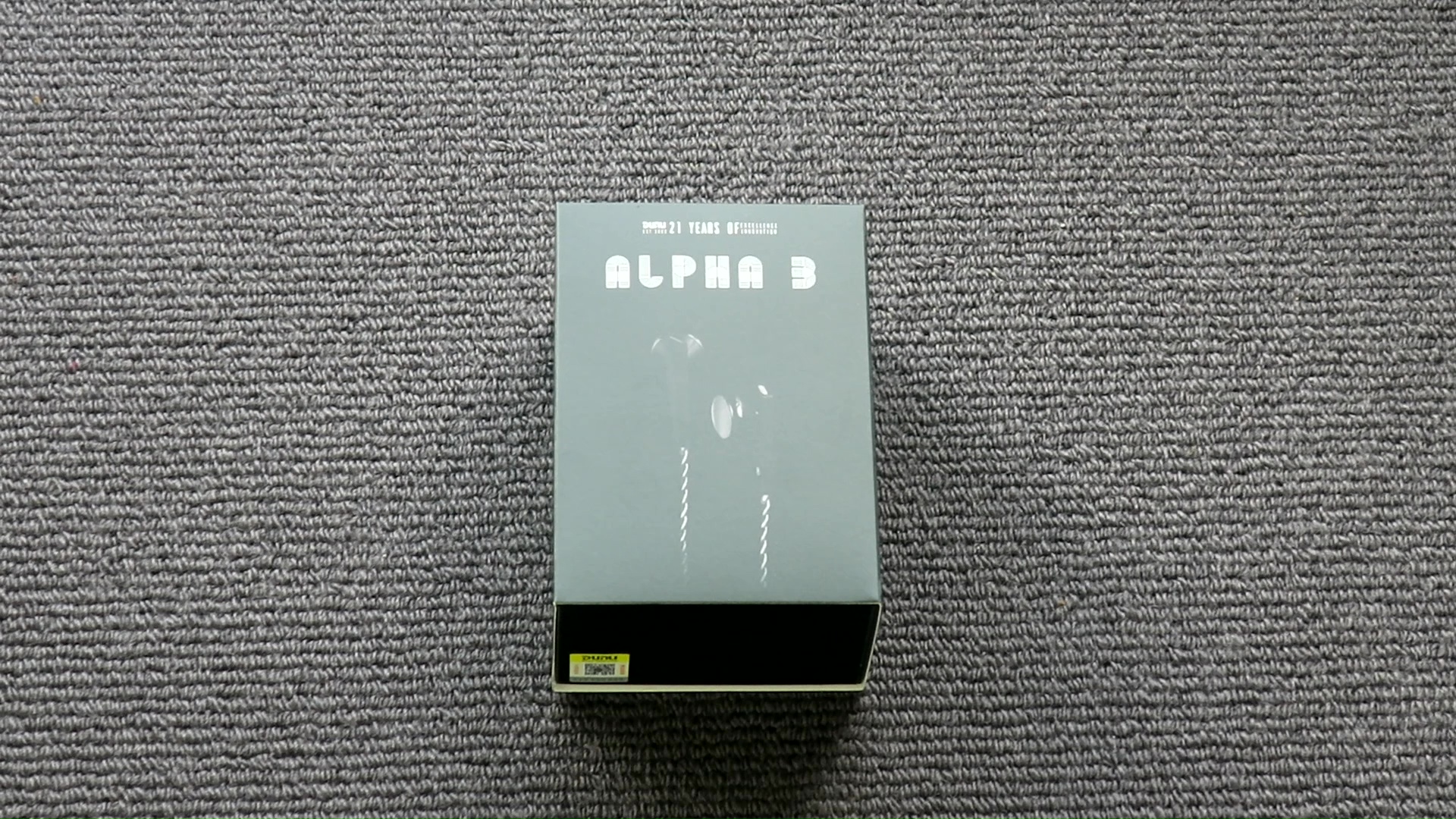
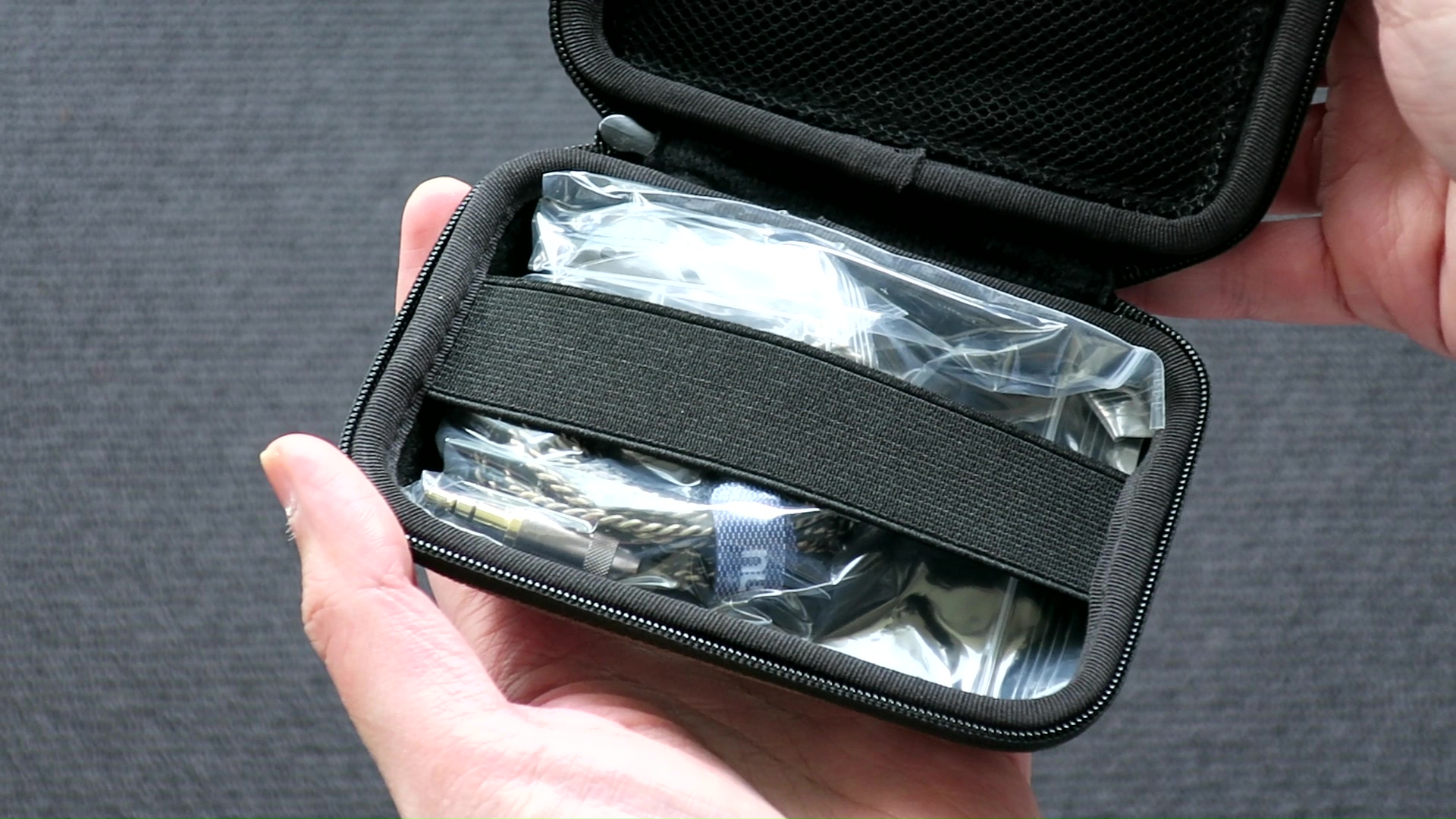
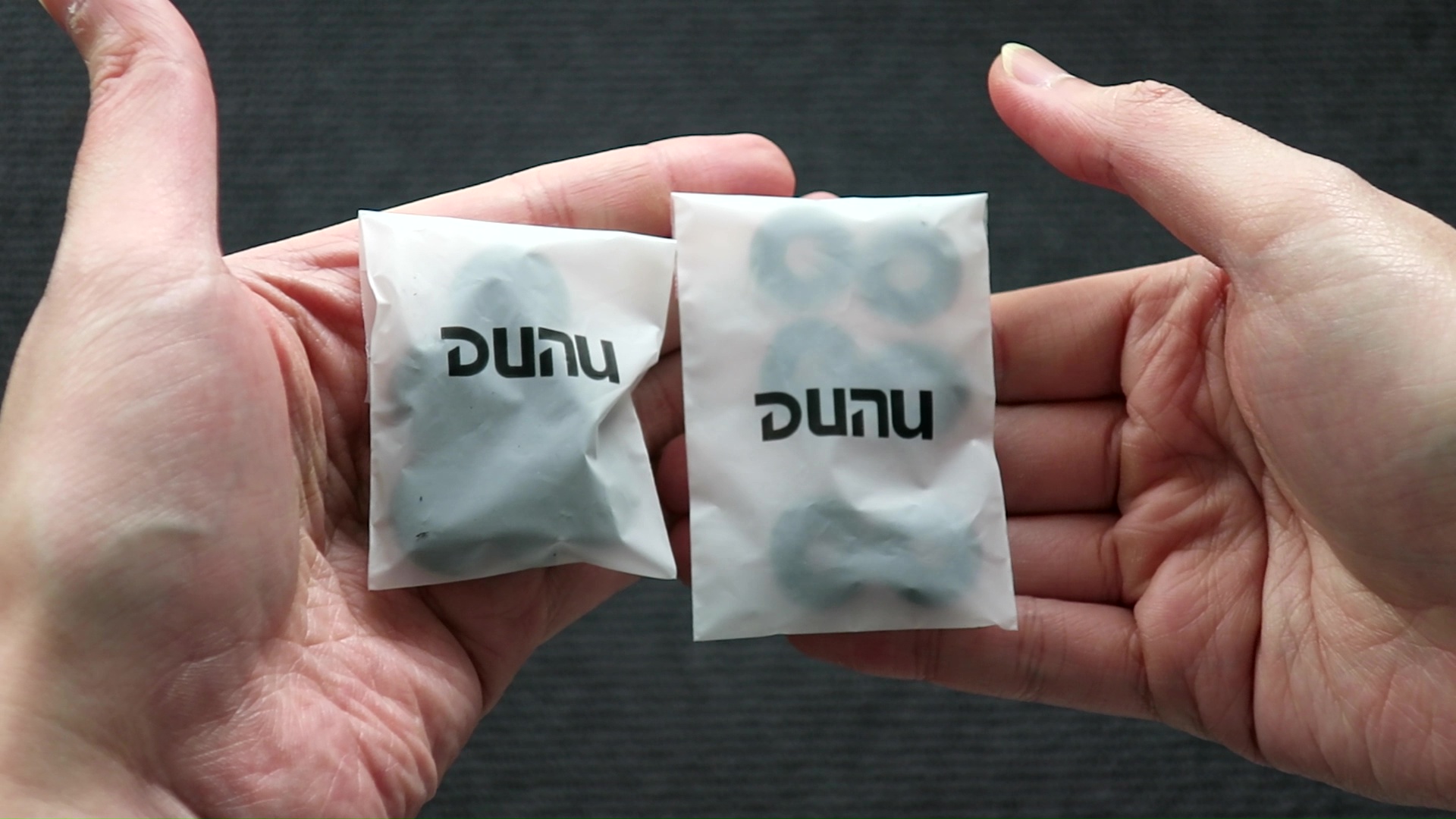

Accessories: The Alpha 3 maintains Dunu’s tradition of providing generous and practical accessories. Included is a nice case with ample space to comfortably store the earphones and replacement foams.
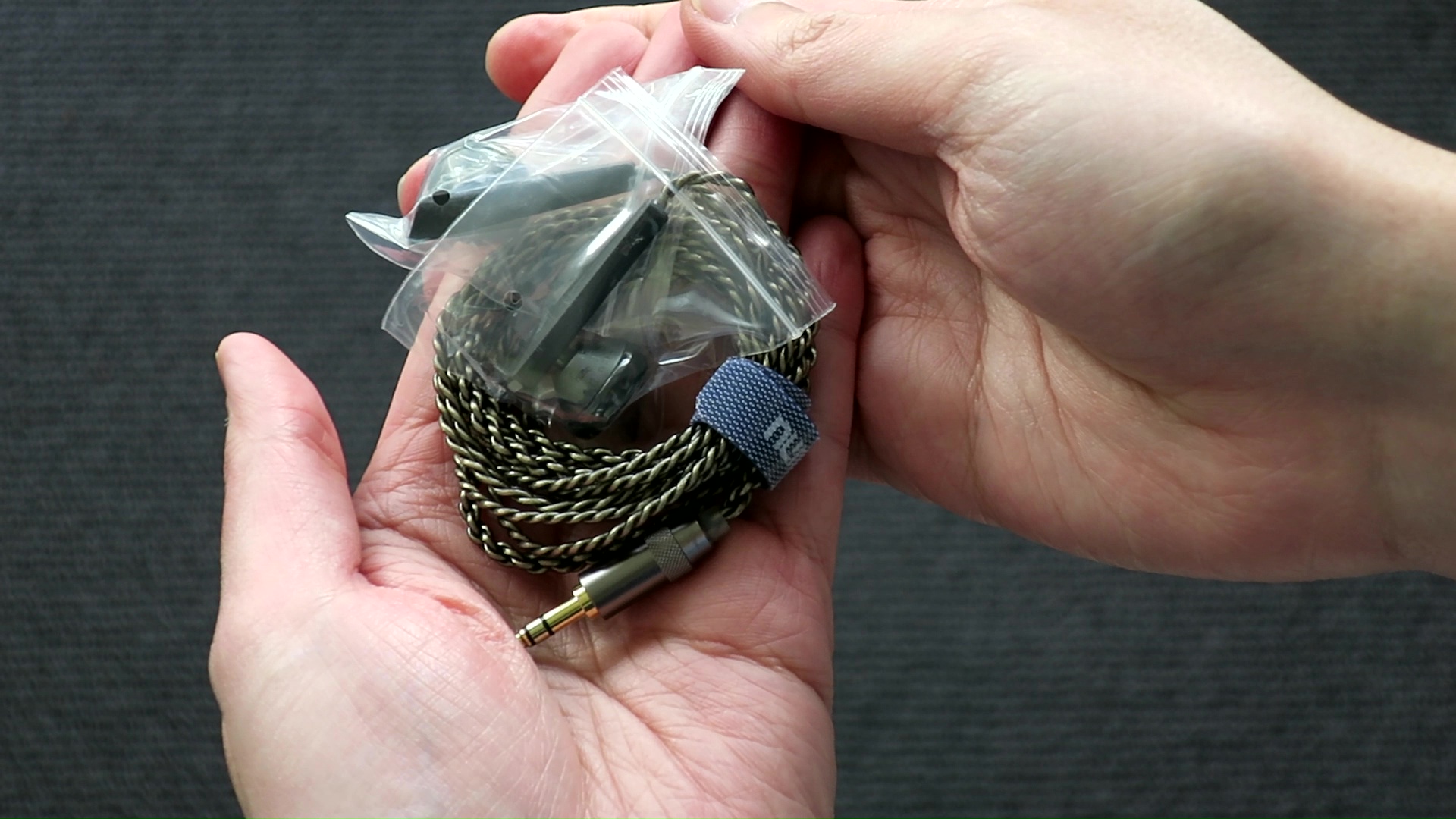
Stock cable: The stock cable exhibits a braiding pattern similar to the Hulk Pro Mini cable that comes with the SA6II. However, the wire material appears to be different. While the cable does retain some memory and can lightly coil upon itself, similar to the SA6II’s cable, it does not cause significant inconvenience during real-world use. It’s worth noting that the cable terminates with a 3.5mm connector and does not support an interchangeable plug system. Personally, I would have appreciated the option to use a balanced output with these earbuds.
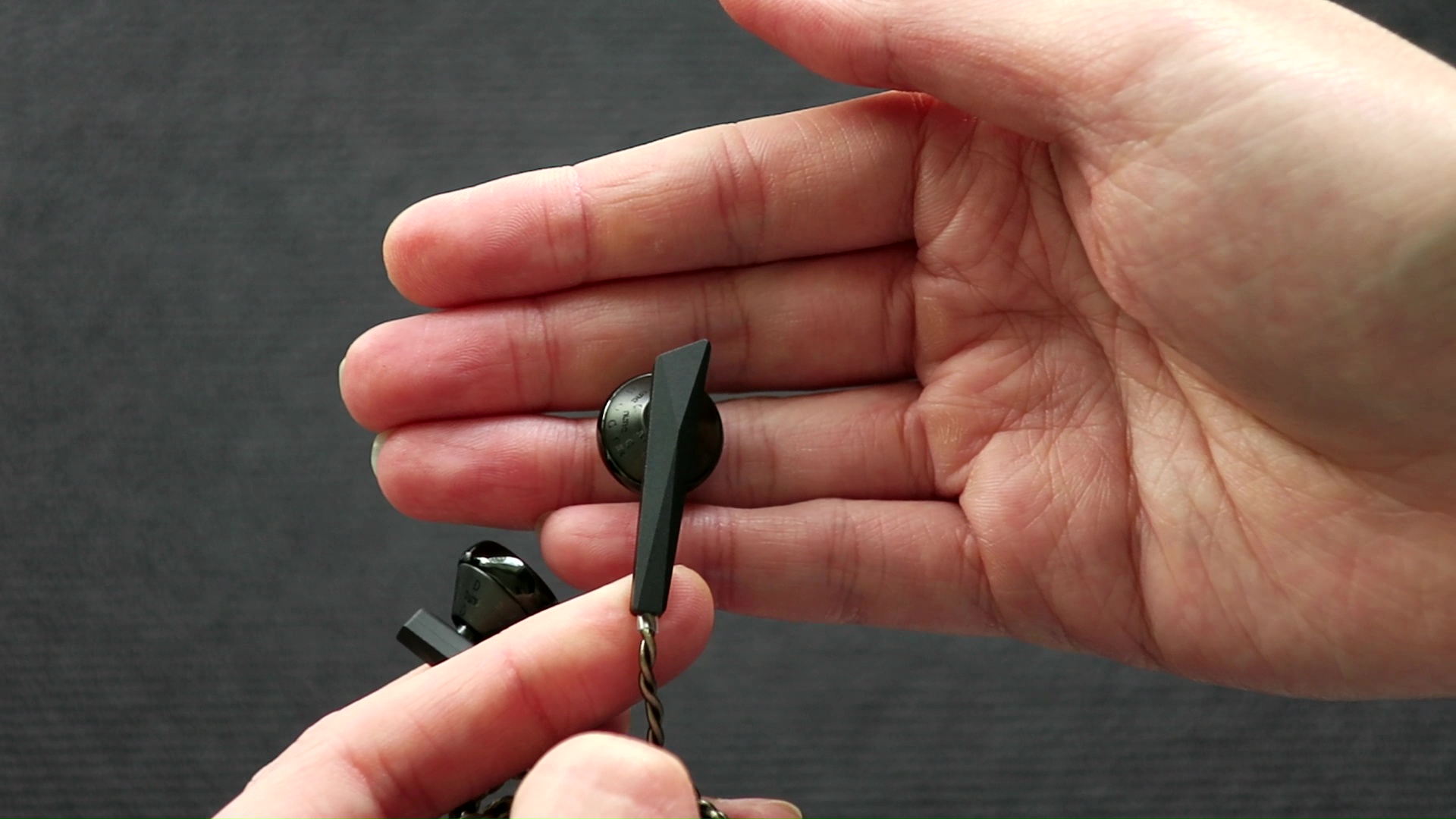
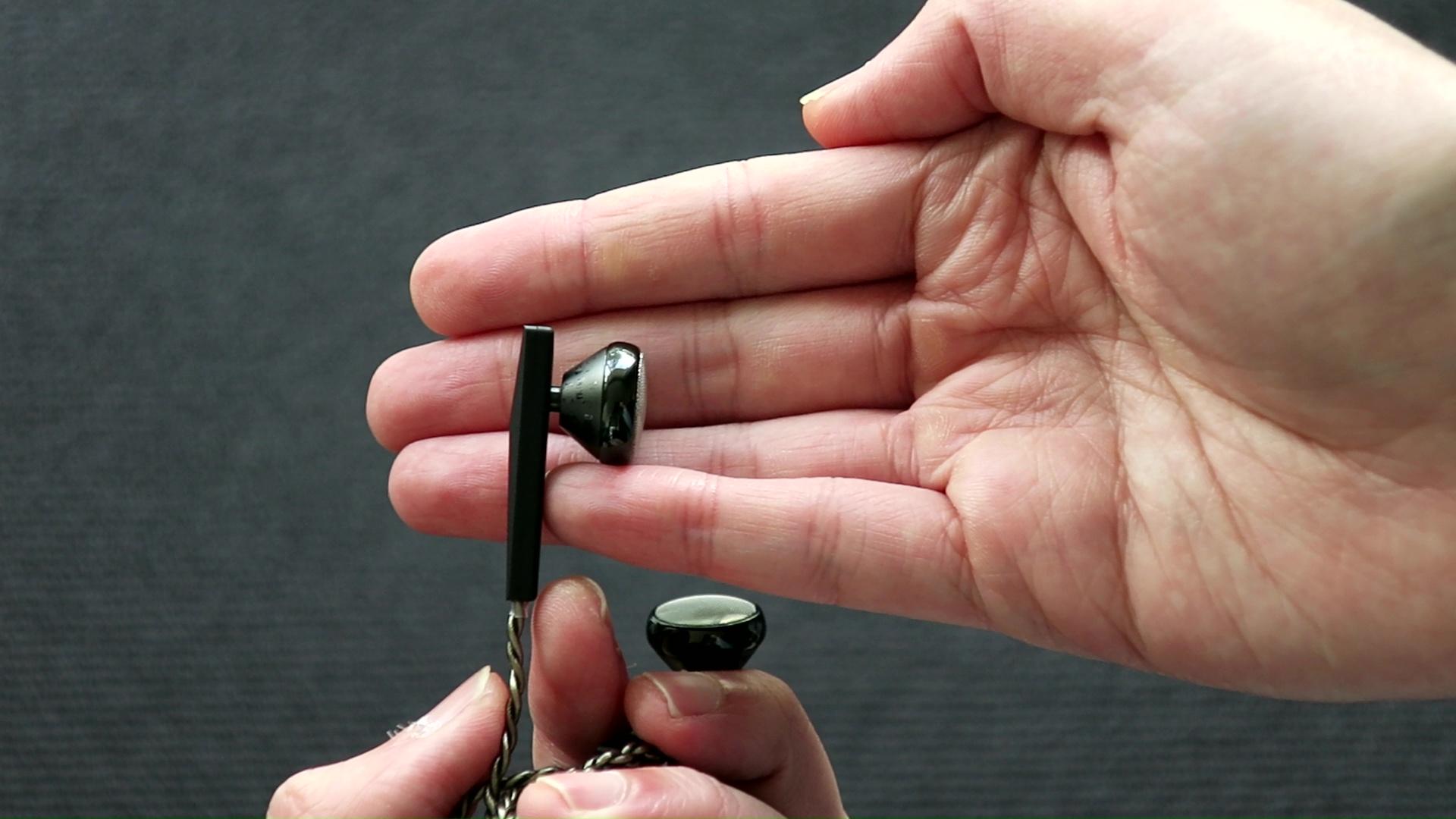
Earpieces: Dunu has designed the earpieces for the Alpha 3, featuring large bass tubes at the back that also serve as the stem of the buds. Constructed from metal, the earpieces offer a reassuring heft. Surprisingly, the added weight contributes to the stability of the fit rather than causing the earbuds to easily fall out. The surface of the earbuds is coated with a matte finish. Additionally, the drivers in the Alpha 3 are slightly smaller than those found in the typical MX500, potentially resulting in a better fit for individuals with smaller ears.
Comfort and isolation: Wearing the Alpha 3 is a very comfortable and stable experience. These flathead earbuds do not provide any significant level of isolation.
Tonality
Frequency response of Alpha 3. Measurements were done with an IEC-711-compliant coupler and might only be compared with other measurements from this same coupler. Visit my graph database for more comparisons.
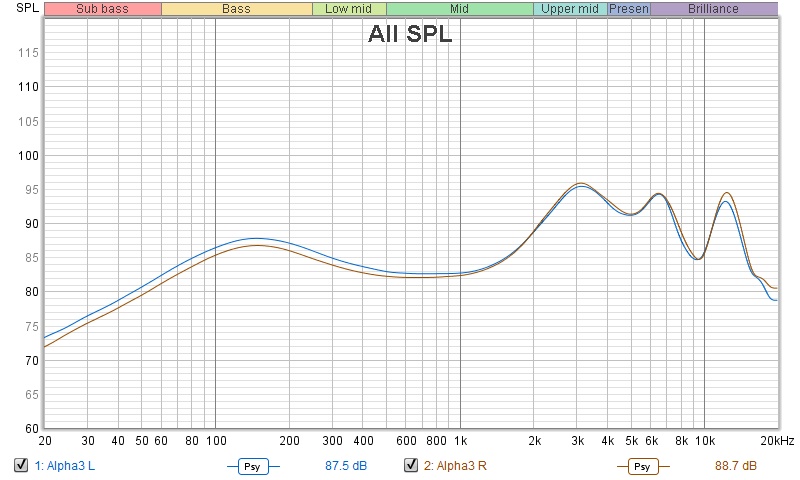
It is helpful to think of an IEM as a filter that highlights or subdues different parts of the incoming audio signal. This effect can be measured objectively by the squiggly lines above, called Frequency Response (FR) graphs, which measure how loud an IEM is at different frequencies from 20Hz (bass) to 20kHz (upper treble). Subjectivity is how your ears and brain interpret the effect of that filter on your music and decide whether it is “enjoyable.” There are some “rules of thumb” when it comes to tonality, but most interesting IEMs usually bend the rules masterfully.
The Alpha 3 provides two types of foams, each creating a different signature. When using the donut foam, there is a notable emphasis on the upper midrange, bordering on the tonality known as “female poison” sometimes used by ChiFi earbuds. This emphasis becomes evident when listening to songs like “Jolene (feat. Dolly Parton)” by Pentatonix, where Dolly Parton’s voice is highly emphasized while the bass voices are comparatively harder to hear. Due to the overtones being more emphasized than the fundamentals, Jon’s voice in “Livin’ On a Prayer” exhibits a somewhat bright, tinny and slightly metallic quality.
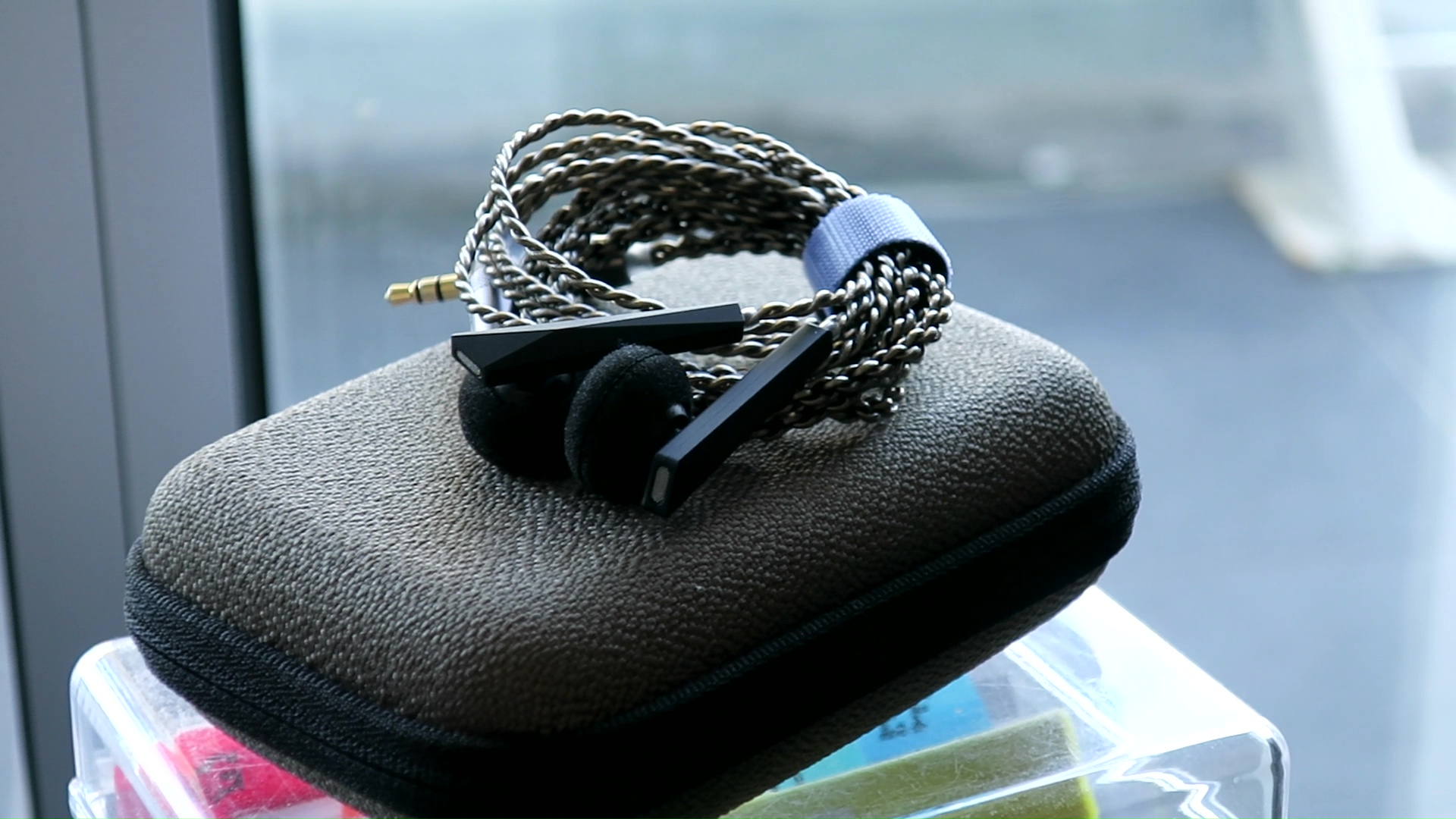
Switching to the full foam configuration boosts the lower fundamental frequencies, creating a more balanced midrange reminiscent of the Blessing 2. With the full foam, it is easily to discern and track the bass voices in “Jolene (feat. Dolly Parton)” by Pentatonix, while Dolly Parton’s voice becomes more balanced and less tinny, resulting in a “sweeter” tonality. Additionally, the cellos and orchestra in “Game of Thrones Medley” by 2CELLOS sound more natural with proper body and weight to the sound. However, even in this configuration, the Alpha 3 does not produce a thick or full-bodied sound. When listening to Bach’s Violin Sonata No.1 by Isabelle Faust, the violin’s tonality still leans towards the upper harmonics. Personally, I would prefer the ear gain region centered around 3kHz to be pulled down by at least 2dB.
Contrary to the emphasis on upper midrange mentioned earlier, the Alpha 3 exhibits a somewhat treble-shy nature. This means that cymbals and hi-hats are not very present in the overall sound. For instance, in songs like “Livin’ On a Prayer” by Bon Jovi, careful attention is required to pick out the cymbals and hi-hats as they are overshadowed by the voices and guitars. The treble itself is slightly soft and overly smoothed, although it doesn’t reach a level that would be considered negative. Interestingly, I did not detect much sibilance with either type of foam, suggesting that the treble tuning of the Alpha 3 is quite smooth.

The bass of the Alpha 3 also takes a backseat to the midrange in terms of emphasis. For example, in “Hotel California (Live on MTV, 1994)” by Eagles, the thump of the drums and the bass guitar can be heard, allowing for discernment and following of the bassline. However, the bass does not stand out as it would in IEMs with boosted bass. Alpha 3 is also noticeably behind bassy earbuds like the FiiO FF3.
The bass quality and sense of dynamics in the Alpha 3 are also only adequate. On the plus side, the attack of bass notes, such as in “Battle Bar” by Yuki Hayashi, is snappy and clean, while the decay of bass notes is decent. My main criticism of the Alpha 3 lies in its weaker sense of dynamics. In simple terms, it does not deliver a hard-hitting “slam” when the music calls for it. For example, in “G.O.A.T.” by Polyphia, where there are many bass guitar and drum “slams” from around the 1:00 mark, the Alpha 3 reproduces the sound of the drums and bass guitar, but it lacks the aptitude and speed to convey the volume swings needed for an impactful slam. Similarly, in “Let the Battles Begin!” by Square Enix Music & Nobuo Uematsu, where big dynamic swings carried out by the orchestra are crucial for conveying a sense of pulse and rhythm, the Alpha 3 falls short in reproducing these swings with the necessary power I expect.
Soundstage Imaging

Stereo imaging or “soundstage” is a psychoacoustic illusion that different recording elements appear at various locations inside and around your head. Your brain creates based on the cues in the recording, which are enhanced or diminushed by your IEMs, your DAC, and your amplifier. Some IEMs present a wide but flat soundstage. Some present a “3D” soundstage with layering, depth, and height. In rare cases, with some specific songs, some IEMs can trick you into thinking that the sound comes from the environment (a.k.a., “holographic”)
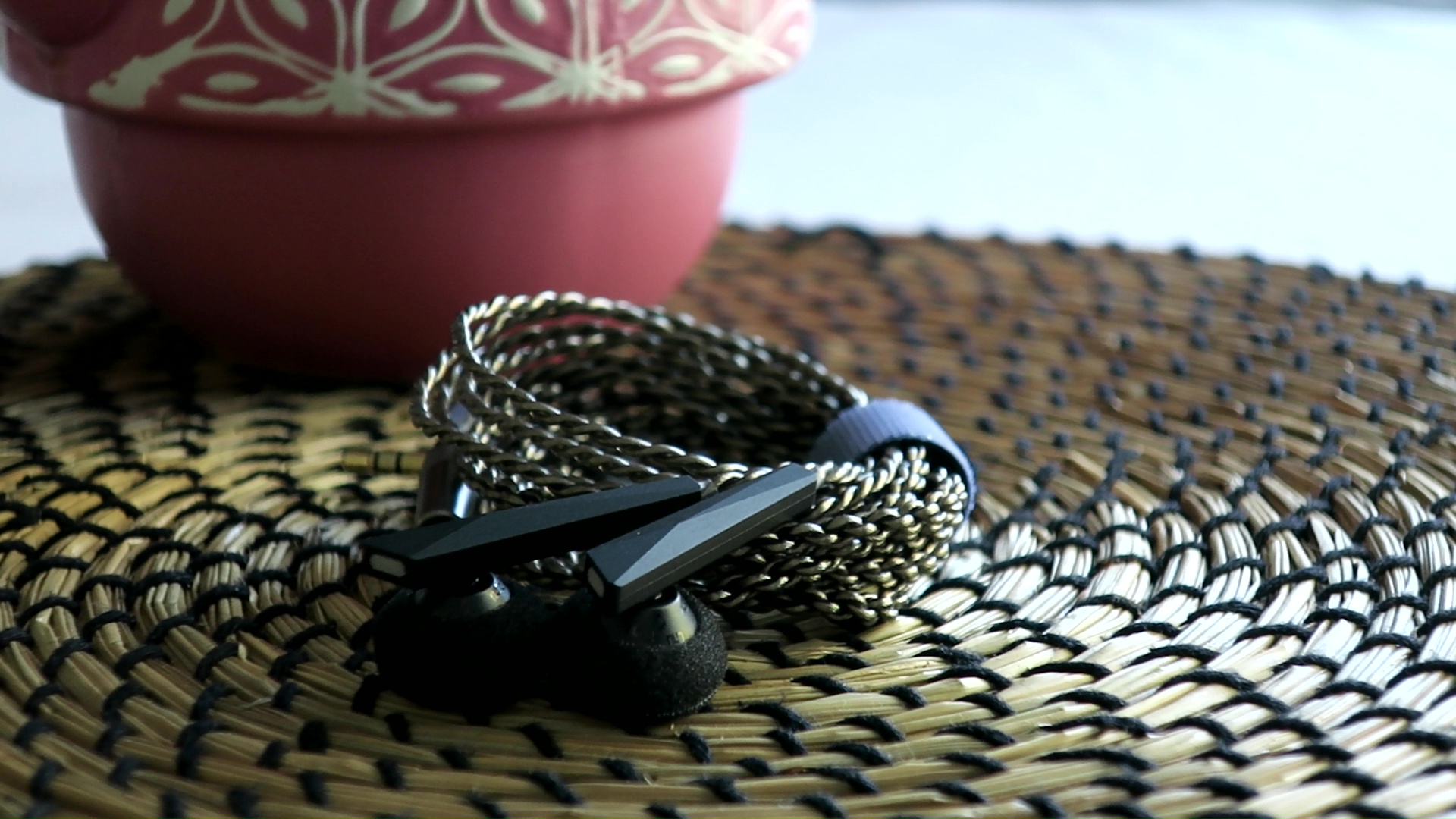
The Alpha 3 offers two types of soundstage, which depend on the type of foam used. When using the donut foam, the stage is focused tightly around the center where high vocals and instruments are placed. However, this center image feels predominantly in-the-head, overpowering the rest of the stage and resulting in a subdued overall presentation. Due to the dominance of the center image in the stereo image, the soundstage can feel overly forward and compact, even though it still expands wide to the surrounding environment.
Switching to the full foam configuration produces a more spread-out soundstage. The center focus remains upfront, so the illusion of depth or a “phantom speaker” in the middle, in front of the listener, is not particularly strong with the Alpha 3. However, there is sufficient space and separation between instruments in the mix, which prevents a congested sensation. The near-to-far placement of instruments is also decent. For example, in songs like “Hotel California (Live on MTV, 1994)” by Eagles or during the busy section around 3:30 in “Jolene (feat. Dolly Parton)” by Pentatonix, there is noticeable layering of instruments and vocals from closer to further away. However, the separation between layers is not as razor-sharp as some other IEMs.
Similar to most earbuds, the Alpha 3 performs decently in projecting the background layer of the stage into the surrounding environment. In songs like “Hotel California (Live on MTV, 1994)” by Eagles, when focusing on the cheers in the background, they are perceptibly separated from the center of the stage. The cheers feel like they are in the background, but not too far away, as if one is standing on the stage behind the lead singer and guitar, and the cheers come from the first round of the audience.
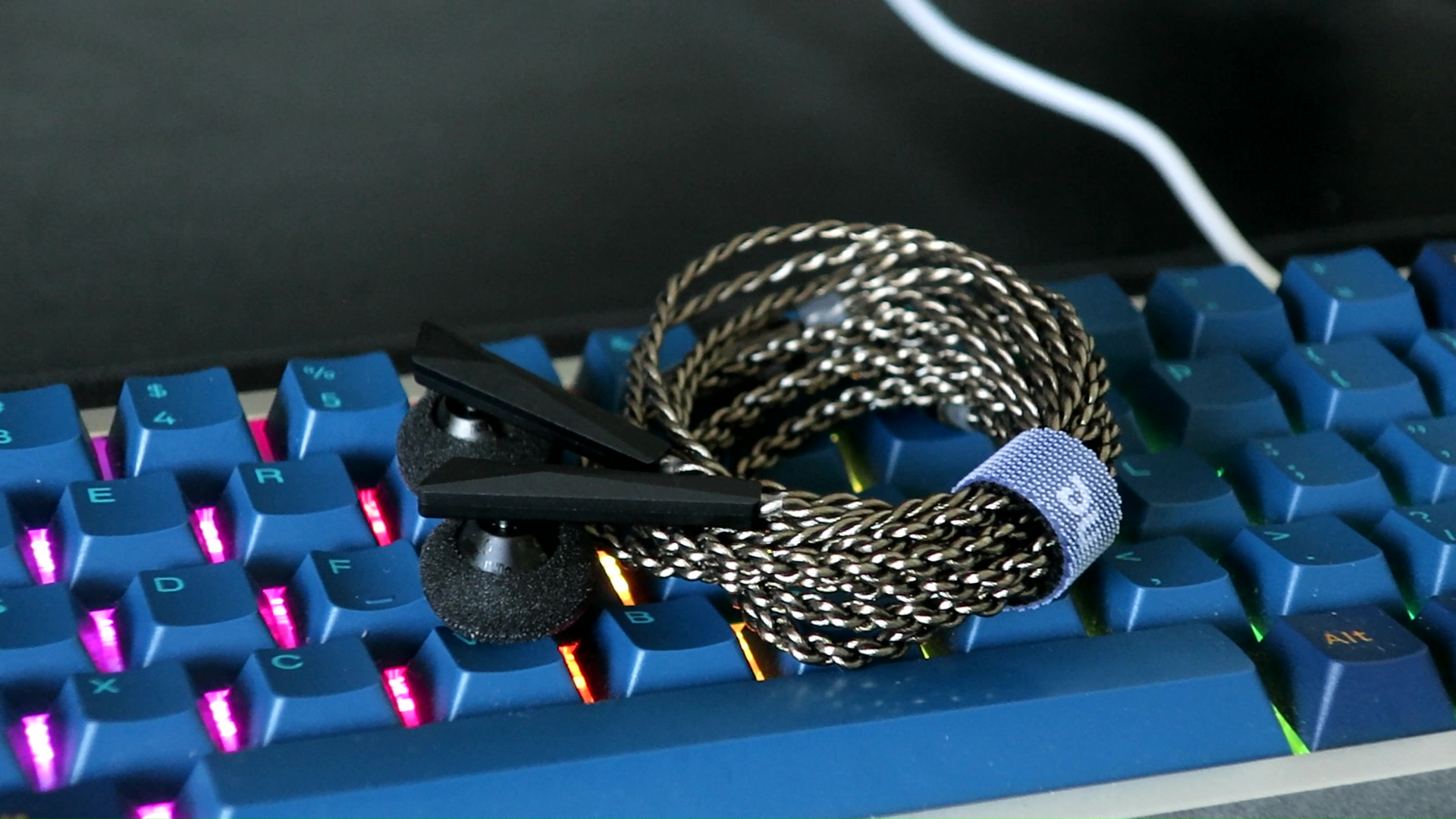
Soundstage imaging with games (CS GO Gameplay by Throneful)
The soundstage of the Alpha 3 gives the impression of an oval shape, with more width from left to right than depth from front to back. Despite this, it was still relatively easy to identify the direction and distance of various sounds such as footsteps and gunshots. The sounds do not feel confined strictly within the head, which is a characteristic often found in many IEMs. Instead, they seem to float slightly around the head. This level of performance aligns with my expectations for earbuds.
Resolution

Resolution is a fascinating subject due to the difficulty of pinning down what it really is. To me, “resolution” can be broken down into three components: (1) Sharpness, incisiveness, or “definition” of note attacks (see the figure above). (2) The separation of instruments and vocals, especially when they overlap on the soundstage. (3) The texture and details in the decay side of the notes. The first two give music clarity and make it easy to track individual elements of a mix. The last provides music details and nuances. Smooth and well extended treble response plays a crucial role.
Resolution and Separation: The Alpha 3 exhibits adequate resolution, and in the grand scheme, it can even be considered good. There is decent separation between overlapping instruments and vocals, allowing for individual voice lines to be followed. For example, in songs like “Jolene” by Pentatonix, with careful attention, it is possible to discern and track the individual voices. When using the full foam configuration, the tonality becomes more balanced, making it easier to hear the overlapped elements, such as a female vocal floating on the right side of the stage. While it still requires some effort to separate and track all the voices, the overall presentation does not feel muddled or congested.

Detail Retrieval: The Alpha 3 demonstrates good detail retrieval. It is capable of revealing micro details, such as the breath and subtle movements of the pads on Emmanuel Pahud’s flute in “Bach’s Flute Partita in A Minor, IV: Bourree Anglaise.” The notes exhibit proper decay and texture on the tail-end, rather than being abruptly dropped off like some IEMs with lesser detail retrieval. However, due to the rolled-off treble, the reverb and decay of the flute in the venue are not particularly prominent unless one pays a significant amount of attention.
Source Pairing

The Alpha 3 is capable of producing loud sound from any source. However, I noticed that the dynamic swings become stronger and instruments spread out further when adding the Topping G5 as an amplifier to the L&P W4 dongle. This could potentially be a limitation of the 3.5mm output of the dongle itself. It would have been beneficial if Dunu included their interchangeable plug system with the Alpha 3, allowing users to utilize a balanced output if desired.
Comparison and Rating
Sources for listening tests:
- iBasso DX300
- L&P W4
Local FLAC files ripped from CDs or bought from Qobuz were used for most casual listening and A/B tests. My playlist for A/B tests can be found on Apple Music here.
All of my listening was done with Spin Fit CP145 ear tips. I listen at a medium volume. I usually turn up the volume until the midrange is fully audible and detailed, unless a treble peak or overwhelming bass prevents me from doing so.
Tonality: The Alpha 3 offers a mid-centric tonality with different flavor profiles. Overall, it delivers a sound that feels accurate and inoffensive, exhibiting fewer tonal quirks compared to some alternative earbuds. I would rate it as good (4/5).
Percussion Rendering: Aria (3/5) <= Alpha 3 (3/5) < Blessing 2 (4/5) < U12T / E5000 (5/5)
The bass quantity and quality of the Alpha 3 are satisfactory. I am impressed by the snappiness and precision of the bass attacks. However, the overall presentation lacks the necessary dynamic contrast that some tracks require, resulting in a reduction of their sense of energy and rhythm. This is an area that could be improved upon in future iterations. I would rate the bass performance as adequate (3/5)
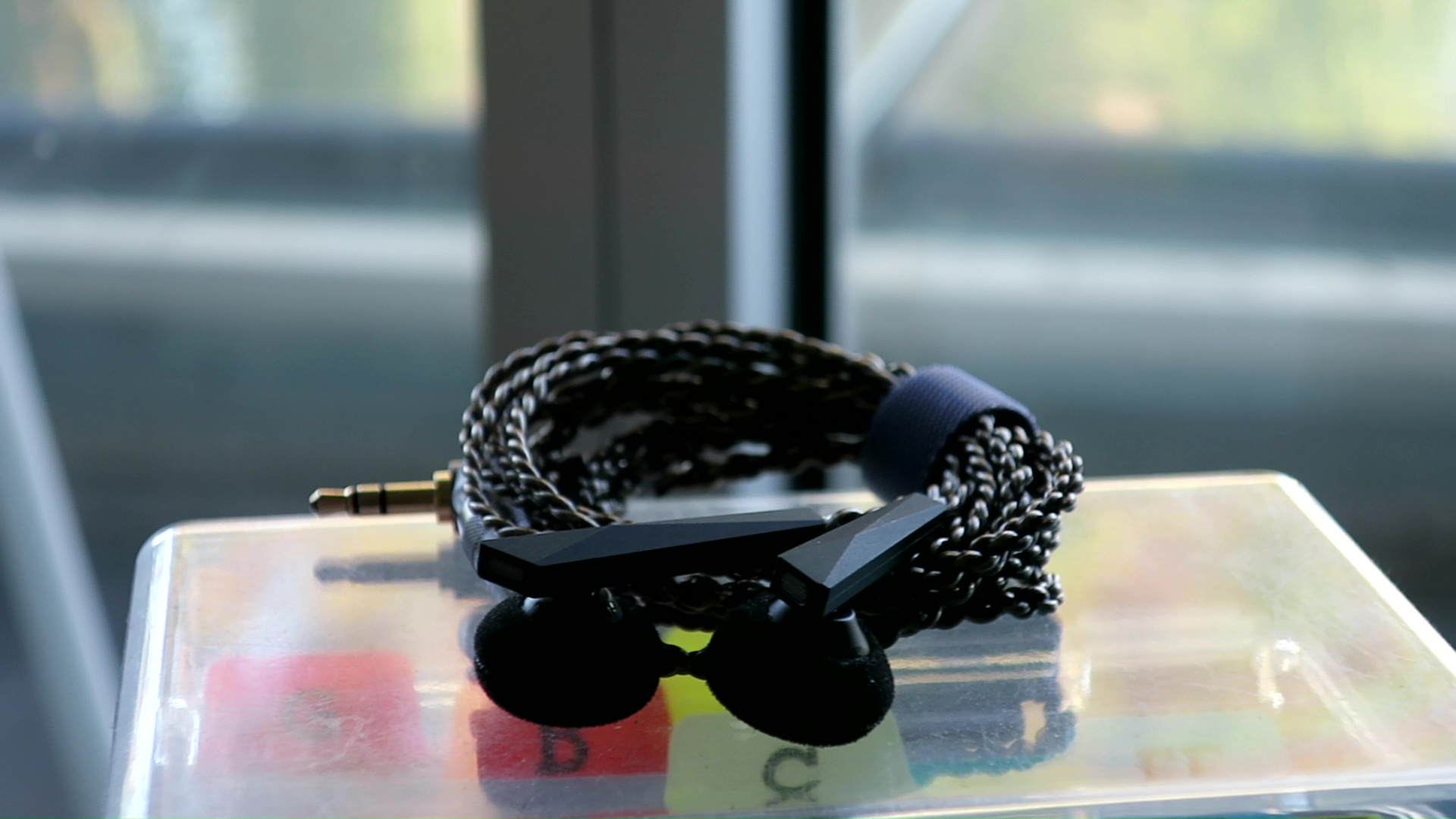
Resolution: Aria (3/5) < Blessing 2 (4/5) = Alpha 3 (4/5) < Andromeda 2020 (4.5/5) < U12T (5/5)
The Alpha 3 offers good resolution, although it may not reach the level of high-end IEMs or earbuds with high-impedance drivers. However, considering its ease of drive, it performs admirably. In A/B tests, I found the Alpha 3 to be more resolving than my benchmark for adequacy, the Moondrop Aria, and it approaches the level of the Blessing 2 in most cases. Therefore, I would consider the resolution of the Alpha 3 to be good (4/5)
Soundstage: SE215 (3/5) < Blessing 2 (4/5) = Alpha 3 (4/5) < Andromeda 2020 (5/5)
As an earbud, the Alpha 3 offers a good soundstage by design. However, it does not push the boundaries in terms of imaging precision or conveying a stronger sense of depth and layering. Therefore, I would consider the soundstage of the Alpha 3 to be good, not outstanding (4/5).
Special Comparisons

Serratus (Test track: Beat It by Michael Jackson)
- The Alpha 3 is noticeably warmer with a thicker lower range compared to the Serratus.
- The Serratus offers sharper, more present sounds, with more details popping up across the stage, possibly due to its brightness. In contrast, the Alpha 3 creates a more focused spotlight on Michael Jackson, as if turning off the surrounding light.
- The soundstage of the Serratus seems to wrap around more, providing a wider sense of space.
- At the same time, the Serratus can be more fatiguing to listen to, while the Alpha 3 remains more enjoyable and comfortable.
FiiO FF5 (Test track: Hotel California by Eagles)
- The FiiO FF5 has a more V-shaped sound signature, emphasizing pronounced bass, kicks, and guitar at the expense of the vocals.
- There is a hint of recess in the slope leading up to the ear-gain peak with the FF5, resulting in a slight “hollowness” in the lead vocals.
- Overall resolution between the Alpha 3 and FF5 is similar, but the FiiO’s tuning allows the guitars to stand out more, creating the illusion of slightly better detail.
- The cheers of the audience feel slightly further away with the FF5 compared to the Alpha 3. The stage presentation of the FF5 has a slightly better sense of depth, although the difference is not significant.
FiiO FF3 (Test track: Hotel California by Eagles)
- The FF3 conveys the strongest sense of distance between the audience and the center of the stage, creating a more pronounced 3D effect.
- The FF3 still exhibits the boldest bass response among the compared models.
- The FF3 has a warmer tonality compared to the Alpha 3.
- The Alpha 3 complements rather than replaces the FF3, offering a different sound signature and presentation.
Conclusion
The Alpha 3 inherits the advantages associated with Dunu products, such as impressive build quality and generous accessories. The tuning is mature and generally easy to listen to. One notable aspect is that the Alpha 3 feels like a complete product rather than an experimental prototype. Whether this is viewed as a positive or negative aspect is subjective. Personally, I find it exciting to see big manufacturers with their research and development capabilities returning to this niche market and offering interesting options. I would love to see more breakthrough performance, but Alpha 3 is a good starting point.
Pros:
- Excellent build quality and included accessories.
- Comfortable fit, enhancing the overall user experience.
- Natural tonality, particularly when using the full foam configuration.
- Good resolution, allowing for the retrieval of fine details in the music.
Cons:
- Lacks some dynamic contrast, impacting the sense of energy and impact in certain tracks.
- Does not offer a 4.4mm connector option, limiting the choice of balanced output.
- Could have pushed boundaries further and introduced more groundbreaking features or innovations.

